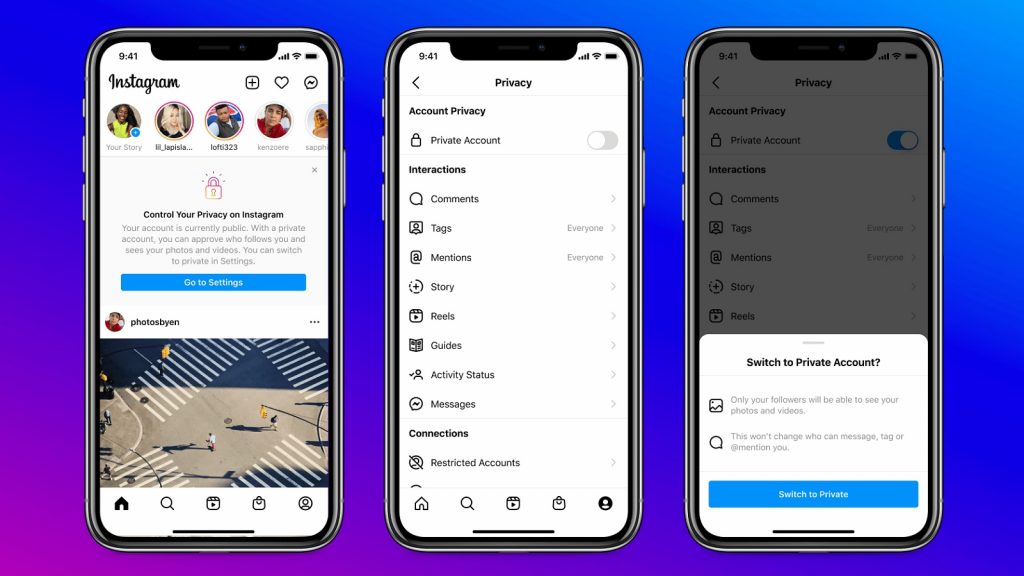Instagram has announced that it will set accounts of under-16 users to private by default, one of several measures it’s introducing to protect young users.
The social media giant rolled the measures out on 27 July.
No ad to show here.
“Wherever we can, we want to stop young people from hearing from adults they don’t know, or that they don’t want to hear from,” Instagram wrote in a blog post.
“We believe private accounts are the best way to prevent this from happening.”
Starting this week, any person under the age of 16 who joins Instagram will have a private account by default. This may include users under 18 in certain countries as well.
With private accounts, users can only see posts, Stories, and Reels if they follow them.
Non-followers also cannot comment on private account posts or see them in the Explore or hashtag tabs.
For users under 16 who already have an Instagram account, the app will send them a notification that promotes the benefits of a private account. It will also explain to them how they can switch their account to private in their privacy settings.
Other measures to protect young Instagram users
At the same time, Instagram has changed its policies regarding what adverts can reach young users.
Starting in a few weeks, advertisers can only target ads to under-18 users based on their age, gender, and location.
Other targeting options, such as those based on interest or activity on other websites or apps, will no longer be available.
The advertising changes will apply globally and to Instagram, Facebook, and Messenger.
Meanwhile, Instagram will introduce technology to spot potentially suspicious behaviour from accounts that interact with younger users.
It will also not show young users’ accounts in Explore, Reels, or ‘Accounts Suggested For You’ to flagged accounts.
Flagged accounts cannot follow young users, or see their comments or leave their own on the young user’s posts.
Instagram will roll these changes out in the US, UK, Australia, France, and Japan. It will expand to more countries soon.
Earlier this month, Instagram launched a setting with which users could limit potentially sensitive content from appearing in their Explore tab. It followed other options such as turning off comments or restricting users from interacting with each other.
Featured image: Instagram
Read more: Twitter testing downvote option for tweet replies
